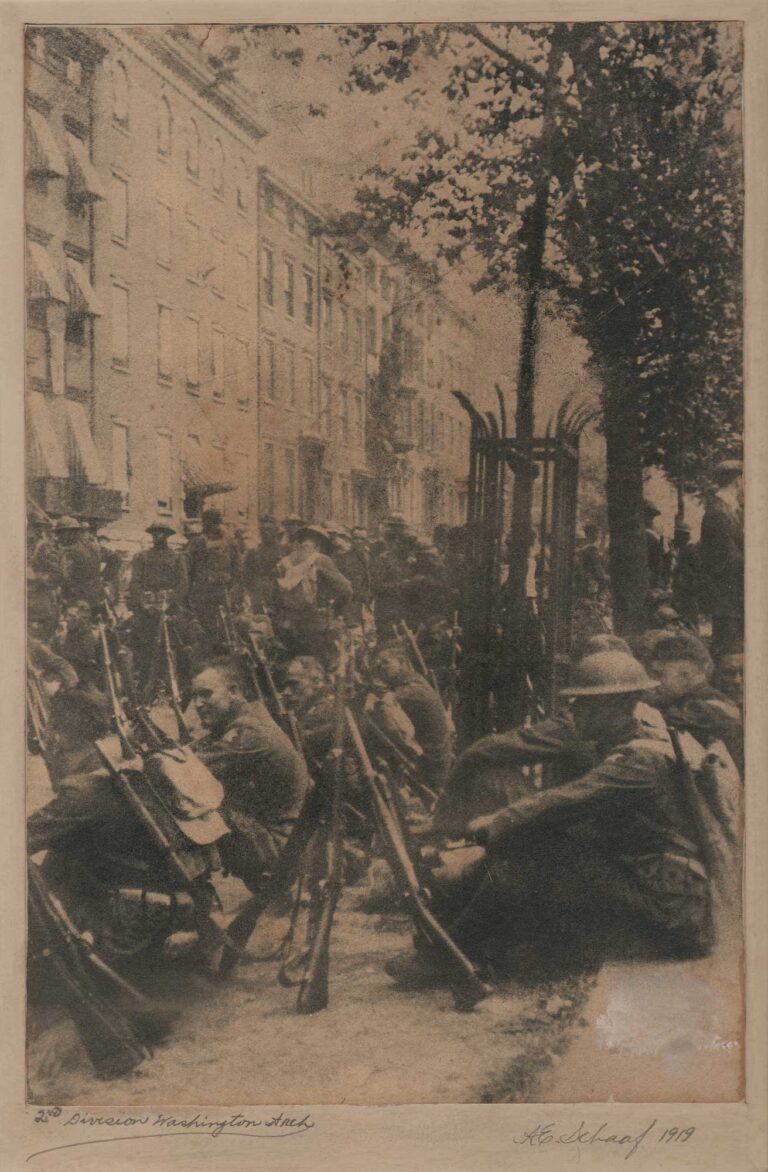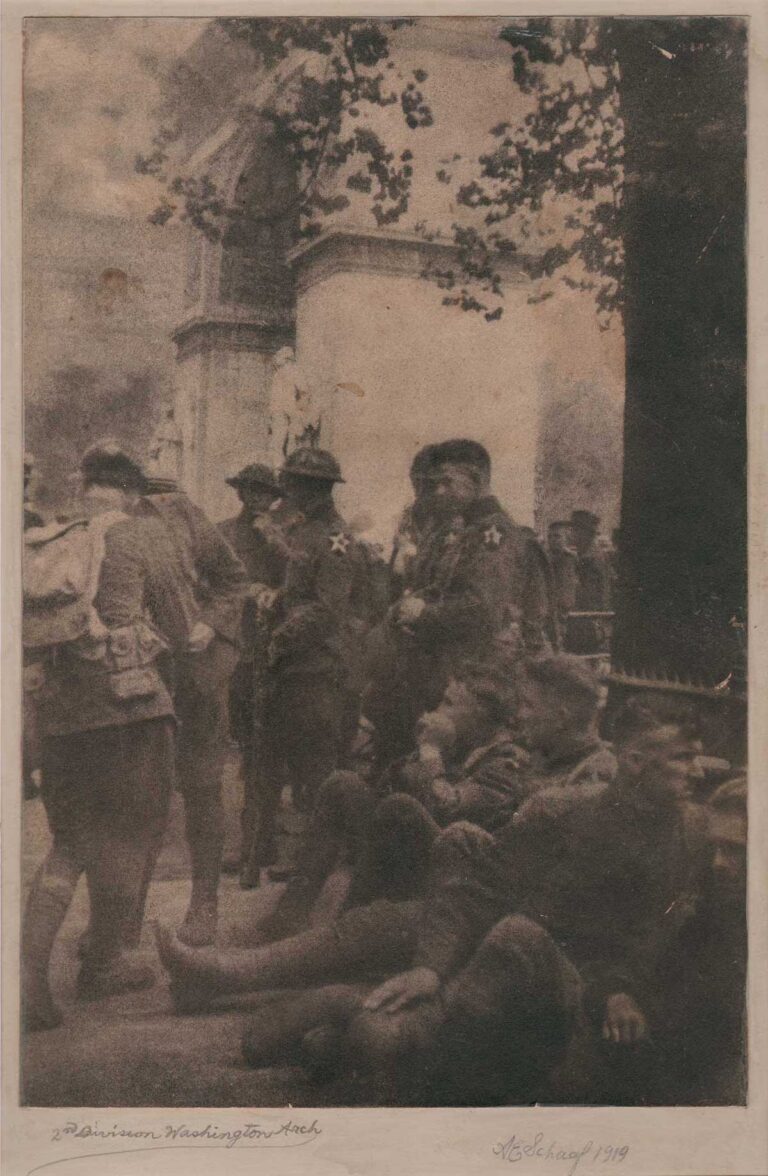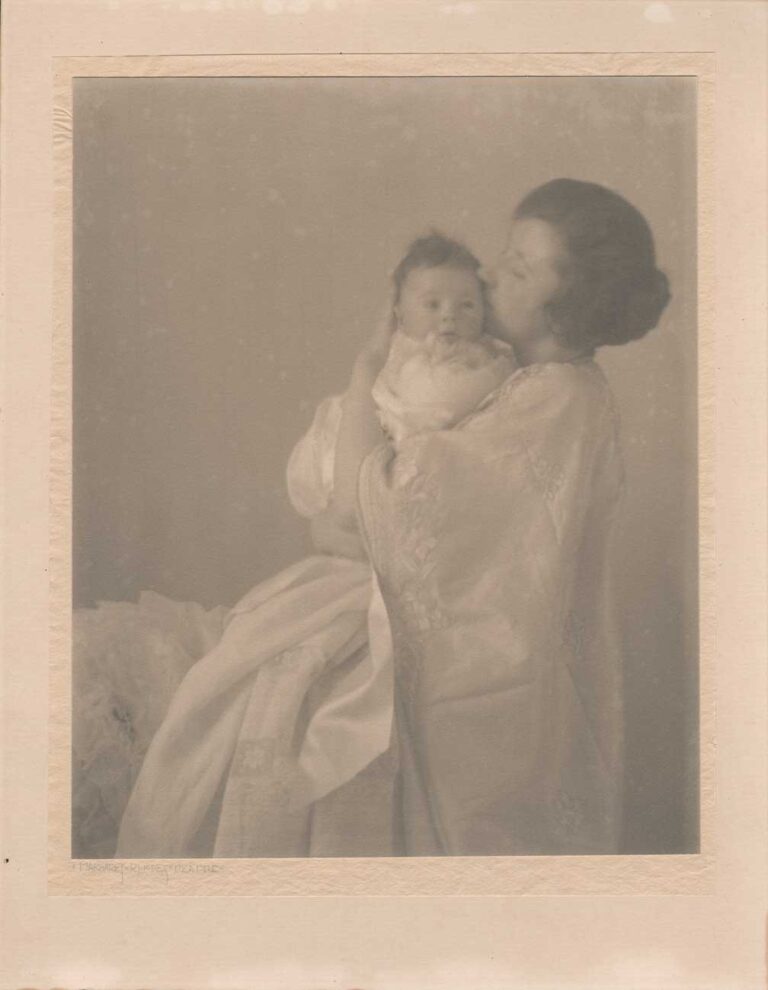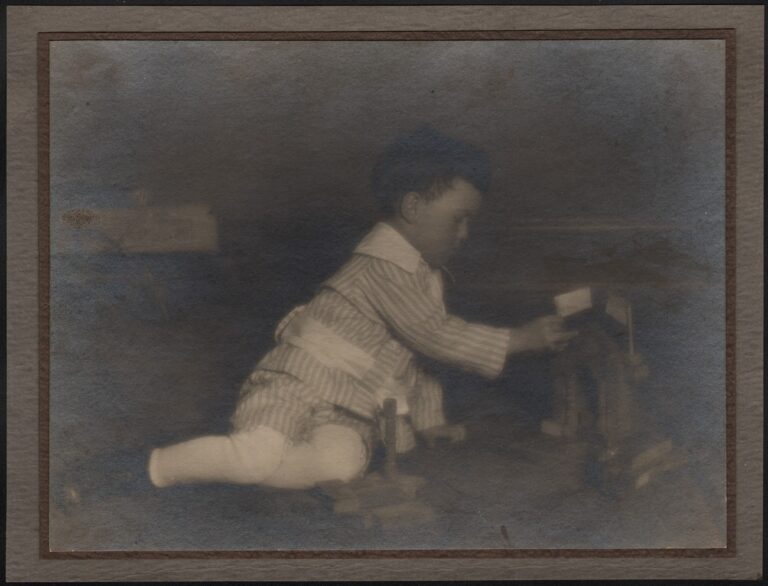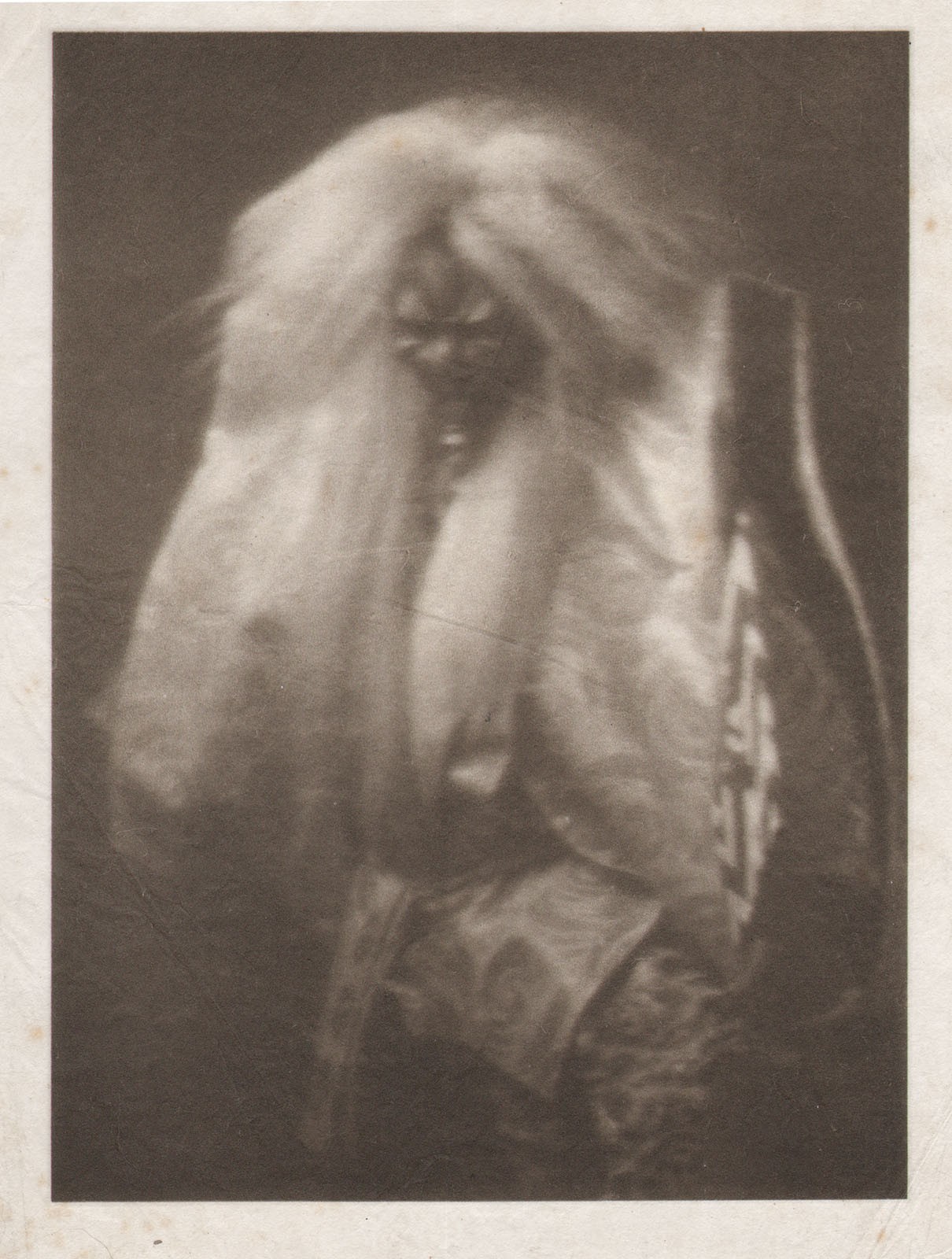
The Noh Dancer
When this photograph was originally posted to PhotoSeed in June, 2014 we could not identify the subject or maker. Now, in January of 2020 we have answers to both.
The photographic subject has been confirmed to be a Japanese Noh dancer, as suggested by a kind contributor to this site after an accompanying blog post solicited ideas. (link above) Recently, a variant of the image titled The No Dancer, Plate LIII, by C. Crowther of Japan was discovered to have been published as a full page halftone in Photograms of the Year 1918: The Annual Review of the World’s Pictorial Photographic Work. Edited by F.J. Mortimer, F.R.P.S: London: Iliffe & Sons, Limited. The tissue gravure shown here shows a Japanese Noh performer in the role of the Shite, (仕手, シテ) or main protagonist, who wears the mask of the second “ghost” state, known as “nochi-shite”.
From Wikipedia: Accessed January, 2020:
Noh (能, Nō, derived from the Sino-Japanese word for “skill” or “talent”), is a major form of classical Japanese dance-drama that has been performed since the 14th century. Developed by Kan’ami and his son Zeami, it is the oldest major theatre art that is still regularly performed today.[1] Although the terms Noh and nōgaku are sometimes used interchangeably, nōgaku encompasses both Noh and kyōgen. Traditionally, a full nōgaku program includes five Noh plays with comedic kyōgen plays in between; an abbreviated program of two Noh plays with one kyōgen piece has become common today. Optionally, an okina play may be presented in the very beginning of nōgaku presentation.
Noh is often based on tales from traditional literature with a supernatural being transformed into human form as a hero narrating a story. Noh integrates masks, costumes and various props in a dance-based performance, requiring highly trained actors and musicians. Emotions are primarily conveyed by stylized conventional gestures while the iconic masks represent the roles such as ghosts, women, children, and the elderly. Written in late middle Japanese, the text “vividly describes the ordinary people of the twelfth to sixteenth centuries”
Charles Pollard Crowther: 1859-1941
C. Pollard Crowther was an accomplished English amateur photographer working and living in Kobe, Japan when this theatre portrait was taken around 1918 or perhaps earlier. According to the comprehensive German online resource Meiji-portraits.de, Crowther first came to Japan in 1894 as an art and curio buyer before starting his own business there in 1901. The website includes the following details:
Charles Crowther came to Japan in 1894 by order of A.A. Vantine & Co., Merchants, Kobe # 112, as art and curio buyer. He had been engaged in art work including stained-glass and other decorative materials.
After a period of work for this well-known New York firm, he opened under his name a general export and import business in 1901. From the very beginning his son J.P. Crowther was associated with his business. As of 1906 the firm was renamed to C. Crowther, Son & Co., Export and Import Merchants, Kobe.
This firm was shipping to a group of the principal department stores in the largest cities of the USA, such as The Gimbel Brothers; The Emporium in San Francisco; The Joseph Horne in Pittsburgh; The J. L. Hudson in Detroit, etc. and also to several wholesale importers in New York, St. Louis, Chicago, and other centres. They also were agents for the British department stores Selfridges.
Shipments to the various countries included chiefly silk, mattings, carpets, Panama hats, straw braids, fans, brushes, baskets, metal ware, cotton goods, electrical goods, toys, and several lines of natural produce.
In addition to the manufactured goods generally classed as curios, C. Crowther & Co. were also called upon for examples of modern and antique Japanese art productions – in which both senior and junior members of the firm were particularly interested and well informed.
In addition to exporting, this firm did a considerable business in imports. For many years the interests of Messrs. Lever Brothers, Limited, were in their care, and during the erection of the Lever Works in Japan Charles Crowther’s services were retained as adviser.
The firm has an influential position in Japan as Resident Representative for several prominentAmerican, Australian, and British manufacturers.
As a long-time resident of Kobe, Charles Crowther took considerable interest in local institutions. He was especially active on the committees of the International Hospital, of the Kobe Regatta and Athletic Club, and of the Kobe Amateur Dramatic Club, of which latter he was also President for some time.
Photography was his great passion and he used his skill in this art for the raising of funds for charitable institutions, and has sent good donations to the British National Relief Fund. His attention was, for instance, also given to the St. Dunstan’s Hospital for Blinded Soldiers and to the American Red Cross Society.
His photographic work was recognised as of the advanced school of photography, and among the honours conferred had been a Fellowship of The Royal Photographic Society of Great Britain. (link)
C. Pollard Crowther joined the Royal Photographic Society in 1914 and became a Fellow in 1917. Initially a pictorialist, he specialized in portraiture as well as theatre photography while living in Japan. According to his 1941 obituary published in the March issue of The Photographic Journal, (RPS) Crowther had lived both in Japan and America before returning to England sometime after World War I (probably in the early 1920’s) “to spend the years of retirement from business life in his native land.” The article further states “He was well known as an exhibitor at the leading exhibitions and his work was always characterised by dignity and reserve. He did not favour sensational methods of lighting or posing, advocating as the true aim of the portraitist the portrayal of the essential character of the sitter. With much of his own work dealing as it did with members of the theatrical profession in their stage parts, this resolved itself in a sincere portrayal of the character of the part interpreted by the sitter.” (p. 120)
An interesting overview of Crowther’s work: An Artist Out of the East, was penned by Wilbur H. Porterfield and appeared along with examples of his portraits in the January, 1917 issue of The Photographic Journal of America.
Provenance: acquired by this archive in the Fall of 2012 from a dealer based in Warwickshire, England.
